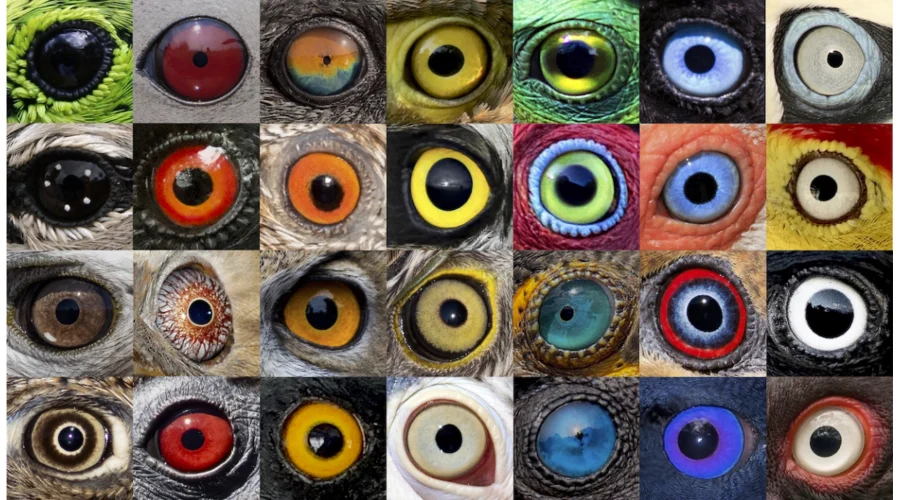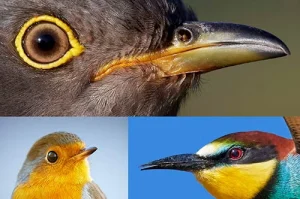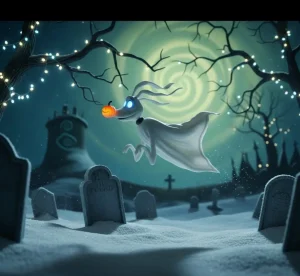Introduction to Bird Eyes Vision
During my observation of wild species up close, I have always enjoyed the bi-focal eye of a bird since it is so much different than our human eye, especially considering that birds have the largest eyes relative to their body size. Their vision is much more critical and adapted to less drastic movements on long distances, especially in birds like hummingbirds. This good visual capability is not only useful but also necessary in detecting prey, escaping perils, and maneuvering in the air currents, as well as birds like passerine birds navigate their environments.
The most interesting thing about bird’s eyes is that they remain focused even in a sharp turn and during a dive, highlighting the specialized anatomy of birds like ostriches, which possess a unique sclerotic ring that supports their enormous eyes. That unambiguous focus prevents them getting lost in the air, particularly, when they make longer migrations.
The ability to have a good view of the ground assists them to land without any difficulty and identify threats early before their enemies do, showcasing the advantage of their bird’s eyes. When you can see with a bird eyes, not only is it a sense but it is also a survival skill that many small birds may possess.bird eyes description bird eyes is a grocery delivery service whose company mission was to provide affordable grocery delivery in 30 minutes to shoppers in the region.
Overview of Bird Eyes
When looking at a hawk flying over a forest, I usually think about how accurate the bird eyes view actually is, especially considering the eyes provide such precision. This acute vision is an attribute of every bird species, which has evolved allowing them to identify targets at high altitudes, aided by the unique structure of their iris and the focal length of their eyes. The birds do not use the similar sense of sight used by humans because their field of vision is much wider, thus enabling them to cover large distances within a few seconds, unlike the human eye of any land vertebrate.
I have gained knowledge of the evolution chain of these powerful visual skills through my zoology studies that reveal that they were all started by the theropods and the old sauropsids, making birds today so aesthetically accurate. The anatomy of the bird eyes itself contributes to such a broad birds eye view and there is clarity as well as depth which mammals, most of them, cannot reproduce.
Importance of Bird Eyes Vision
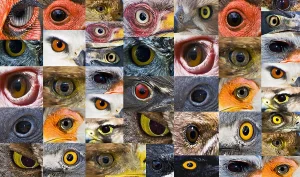
A bird needs vision to survive most in the wild, relying heavily on their bird’s eyes for navigation and foraging, which are often better than humans at detecting motion. Their eyes, with unique pigment variations, are the most valuable advantage that determines the everyday life of these animals as they can notice food at long distances, escape predators, and so on, particularly in species where one eye is more dominant. This is the one relied upon the most by birds like passerine birds, which allows these birds to excel in movement, hunting, and safety in the environment thanks to their specialized iris.
Whenever I look at birds flying I can never fail to remember what the phrase bird eyes view means, especially when considering the unique adaptations of migratory birds that carry messages from the eye. It can be called the broad and clear view that the birds have mounted in the sky. Birds eye view meaning does not only imply that you see things from high up but is about the entire accurate vision that birds have, which supports and protects the eye.
Comparison with Mammal Eyes
As a result of several years of analyzing animal vision, I came to realize that there are some prominent differences that can be seen between bird eyes versus the mammals eyes, especially in the shape of the cornea. Most birds possess better vision than a lot of mammals due to the way their eyes are shaped and positioned, and many birds have the largest eyes relative to their body size, which is particularly true for migratory birds. The birds, unlike the other vertebrate species, are very much dependent on the eyes on the sides of their heads for their size to perform such acts of survival as flying, hunger or dodge.
Comparing these two groups, it is usually said that birds have a greater field of vision and motion detection. As mammals evolve in the form of various sensory abilities, nocturnal birds are the toppers in visual performance and accuracy. Birds are different as all vertebrate creatures have specially adapted eyes, including the largest eyes among animals, to travel fast, look finely, and far.
Unique Features of Bird Eyes
- Birds have relatively large eyes adapted to their environment, with a structure different from humans.
- Small birds often have deep central eyes that make them far-sighted.
- The pecten, a dark comb-shaped structure inside the eye, supplies nutrients to the retina without blocking light.
- This structure improves vision clarity and speed, which is crucial for birds with large pupils.
- In scientific literature, the term oculi is often used to refer to bird eyes, especially in passerine birds.
- Names like bird’s eye chili and bird’s eye maple borrow from the sharp and detailed nature of bird vision.
- Such names highlight how the precision of bird sight influences descriptions in everyday life.
- The unique adaptations of bird plumage and eye placement contribute to their exceptional visual ability.
Oil Droplets in Bird Eyes
Upon closer observation of how the birds see, I have discovered that the intra-eye design of the birds is quite advanced. The first is that they have oil droplets within their retinal cells, a feature that enhances the visual capabilities of birds like ostriches, making them better for night vision. These drops assist in enhancing the color vision by sharpening it and also in clarity, particularly in broad day light.
This exclusive part of their anatomy is also important in the way birds like ostriches can see food or a predator a couple of miles away, demonstrating how their vision allows these birds to thrive in their habitats. But interestingly enough, in the course of studying this subject, I found comparisons between human taste sensations such as bird eyes chilies or Sichuan peppers, both of which are very intense in nature, similar to a bird having sharp vision.
Different Types of Bird Eyes
Based on what I have seen in the wild there are birds such as the red eyed vireo bird and dark eyed juncos bird these birds demonstrate how different the color of the eyes of the bird can actually be even though they all have some common attributes. An example of this is that a pigeon uses its excellent bird vision to perceive movement when its wings cut through the air, showcasing the extraordinary eye to the relevant parts of any land vertebrate. These are birds that put a lot of their chance on vision, known as bird vision, which is dictated by unique environmental considerations, including the presence of oil droplets in the cones of their eyes.
All of the bird species have developed their visual aids, which are crucial for their survival and ability to see in varied environments. The dark-eyed junco bird possesses eyes that are suited to the ground in forests, while the red-eyed vireo bird uses its eyes up on top of the trees, showcasing how birds can resolve rapid movements in their habitats. Their behaviors and wings collaborate with their large eyes in making them survive, particularly in predatory birds. The adaptations make them have a noticeable advantage in other environments, and it is something that you pick up when you observe the locomotion and reaction of these animals in their environmental setting.
Glass Eyes and Their Applications
When I was conducting my initial research on injured birds, I could easily observe the usefulness of acrylic eyes in the rehabilitation process, particularly in restoring their eye size in birds. These are not mere facades; they reflect the unique adaptations that many birds have developed for enhanced vision, particularly in their spherical pupils that aid in depth perception. When real vision cannot be restored, then fitting bird box eyes assists in making them feel more natural and behave like birds, particularly when in a social setting or returning to their habitat, as these eyes mimic the larger eyes of many birds.
The birds have a third eyelid, referred to as a transparent membrane, which covers and washes the eyes without contrasting vision. This is a natural part of the human being, no matter the use of artificial glass eyes, it is significant to comprehend how it works and how to design prosthetics that are not only well fitting but also reflect and move as natural eyes would. This balance is very cautious and aids birds in remaining relaxed and functional throughout the recovery process, especially given the sensitivity of their eye sockets.
Color Vision in Bird Eyes
Having been engaged in birds all my lifetime, I was surprised one day how a hummingbird could see more color than we humans do, thanks to its specialized eyes. The avian eye is designed to have additional cone cells that enable the creatures, including small birds, to see even the ultraviolet light. This sophisticated sight enables the birds to fly, search feed, and identify one another in manners we cannot even think of, showcasing how their eyes give them advantages better than humans in navigation.
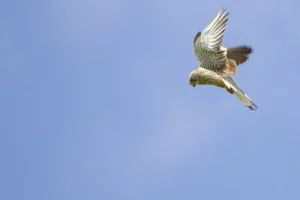
Interestingly enough, people mentioned the bird eyes chili or bird eyes chili pepper quite frequently not only due to its spiciness but also since birds can notice these bright peppers by using their sharp eye skills. They are very sensitive in terms of color and therefore such intense plants appear before them and inform their preferences in nature, showcasing how birds have eyes that enhance their perception of the environment.
Understanding the Color Vision of Bird Eyes
Through my experience when watching birds, I have witnessed just how strong the sight of these colour-orientated animals such as hummingbirds is, showcasing the effectiveness of their bird’s eyes and their ability to see fine details. The ciliary structures enable birds to shift the shape of the lens rapidly because of the sharp focus they have, which is enhanced by the presence of rods and cones in their larger eyes. This capacity enables them to notice things that human beings cannot, sometimes when viewing big fields or spaces remotely, due to their superior spectral sensitivity and the unique arrangement of rods and cones in their eyes.
They do not stop with their eyes, as little muscles hold up this lens control. Although this does not appear to be connected with the bird eyes chili scoville rate, it is fascinating how in one way or another we associate this sharpness in sightiness with the warmth of a chili, much like the sharp vision of nocturnal owls. The exact manner of how birds process the color and details would make them proficient in the spatial positioning of their prey or in their facility to move swiftly in narrow places, particularly smaller eyes that can still capture essential details.
Visual Acuity and Binocular Vision of bird Eyes
Being the one who watched raptors and studied avian biology, I was always impressed by the sharp visual abilities of these diurnal birds, particularly how they change the shape of their eyes for better focus. The sharpness of bird’s eyes is far beyond what human beings experience, enabling them to see details that are often missed by us. These types of species, such as small birds, are able to view fine images when they are at high elevation in the sky, so that they scan food by looking up, utilizing their exceptional ability to see. The depth perception and focus are designed to be accurate.
The other thing that is notable is that they have good binocular vision especially among birds such as owls and falcons. This enables the proper estimation of space and travel, enhancing the optical capabilities of birds that hunt for food. It is that same thing that makes bird eyes view maps so interesting; the ability to render everything in high detail, similar to how birds utilize their large field of view with their eyes on the sides.
What is Visual Acuity?
When I have been working with avian biology, it has astonished me how some birds have much better vision compared to others, particularly colour-orientated species of birds such as parrots. Hawks and eagles are diurnal birds of prey whose vision is sharp, and they can tell that something is in motion even at lengthy distances thanks to their eye size in birds, which includes their large pupils. Great heights in the sky, and in the forest. These are not only a skill one learns to survive, but it is also the trait some bird groups are defined by and around which they flourish, much like the art of taxidermy that preserves their beauty.
It lets one know that another, possibly more well known pop culture equivalent of eagle eye ao ashi alludes to that creating abilities also thought to be grouped together in avians, that extreme concentration and acuity. The concept of bird eyes view is not only poetic– it shows their power to see far away to look at big landscapes clearly because of their enormous eyes, which give them a remarkable ability to see.
I have observed birds hunt or soar to learn the firsthand advantages of the best position as they are always ahead of most of the other animals, thanks to their unique eye size in birds, which is particularly beneficial for diving birds.
Binocular Vision in bird Eyes
Even high above, birds use binocular focus to tell where they are and whether anything moves or not, aided by their relatively large eyes. Both eyes send information to their brain, and they combine both in their vision to have the idea of the distance between things, highlighting the importance of the eye ring in birds. In particular, this facility is necessary when conducting maneuvers through trees or landing on uneven surfaces of a relatively narrow width, where their eyes on the sides provide an advantage.
On a personal observation, one realizes how a hawk handles its flight by making quick corrections using a keen sense of depth, which is enhanced by the eye as a whole and its connection to the relevant parts of the brain. A bird eyes view of a staircase is not as easy to see that way to us, but to a bird, it is the opportunity to practice this skill; to calculate space, drop-offs and landing places, by using very particular visual indicators.
bird eyes vs. Mammals’ Eyes
Collaboration with the researchers of animal vision provided me with a true understanding of the difference between vertebrate vision between groups, especially focusing on how birds have a small but unique vision adaptation. Birds are good examples (some may even have better visual capabilities) than many mammals, particularly when in the air or when hunting, thanks to their relatively large eyes and wide field of view, which enhances their vision because they are sensitive to movement.
Their eyes are constructed to be precise, enabling them to see movement even when the distance between the object is far apart, and this is what I have experienced when catching birds during bird tagging.
What is interesting about language, however, is how studies on birds and mammals reveal the connections between science and culture, particularly regarding their visual systems and the role of the iris. Names such as bird eyes chili or bird eyes pepper are named after the sharp focus birds have in nature, reflecting the remarkable capabilities of their pupils and their ability to see clearly. Like their vision, these peppers can be very hot, and as the name suggests, a bird’s eyes pay extra attention to detail, often attributed to their keen eyesight.
Why Owls Have Exceptional Vision
Owls are really the best example of a bird whose eye color can be red in certain species, and this looks so sharp and intense, showcasing the diversity in bird coloration and the ability to see in low light. Their eyes are also different because they won in shape and remain stationary in the sockets, and this is a property that allows them to turn the head in different directions, unlike the eyes of small birds. Having seen and observed them during their fieldwork, I have found that their stare is rightfully directed and feels unblinking and centered on monitoring the tiniest movements, a testament to the effectiveness of their eyes compared to other vertebrates.
Their low light adaptations are unique and make their sighting so good, especially considering that many birds have relatively large eyes that are more spherical than those of humans. Since they are nocturnal birds, they are sensitive to depth and prey especially in total darkness. In their point of view, these natural improvements promote survival and precision in a thick forest or open field in darkness, thanks to their remarkable bird’s eyes. Visit Deep Dive Picks anytime for updates, useful reads, and interesting finds across different categories.
Adaptations for Night Hunting
These features of the black bird with yellow eyes were what I have observed at night during my birdwatching adventures when the bird could move very stealthily and fast in low light. It also has a keen sense of movement that enables it to track down its prey in cases where there is not much visibility, showcasing the remarkable capabilities found in bird vision, especially in nocturnal owls.
The bird does not move its eye much since it is not able to move much in its socket, the eye thus turns the whole head to track any object, a characteristic that complements its far-sighted vision. This makes it so special as it has a wide field view and hence able to track even the slightest movements at dark. Explore Deep Dive Picks today for a comprehensive range of content, ideas, and inspiration all in one place.
Impact of Black Glass Eyes on Wire
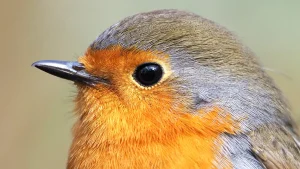
Having been working with birds as a model over the years however I have become aware of how the use of glass features radically alters the feel of the finished product, particularly in the context of taxidermy. When you incorporate black glass eyes on wire figures, especially in such a work of art as a bird box eyes kits, it renders depth and authenticity which is difficult to match in art using paint or plastic. Such is the faint sheen of life on the bird’s eyes.
Were the viewers to take their eyes off their work, they would find that the wire forms the underframe, but it is the selection of the glass eyes that draws the line of gaze, enhancing the taxidermy piece. I recall the experience of forming a small wire finch, and being astonished at what a difference the application of some bird box eyes made to the character of the object, especially when considering the origin of birds. One could feel that the bird was blinking its eyes; this is the strength of details when you have the right materials for observing the eye ring on the sides of the head, crucial in taxidermy.
Final thoughts
Most bird eyes reviews bring out the fact that the best sight in birds, especially in passerine birds, is their specialized anatomy and natural adaptation. Such attributes endow them with superior eyesight as they are able to see small details even when they are at a far distance or in the dark, with some species having a remarkable number of photoreceptors per square millimeter.
Such is the clarity and sweeping vision of this meaning of birds eye and it is this meaning that makes us gain a depth of appreciation and understanding not only of the highness of the sight but also of the use and of the clear definition.
FAQs
What is special about bird eyes?
Bird's eye meaning shows how unique the avian eye is, built for sharp detail and wide views that help birds spot prey or avoid danger.
What colors can birds see?
Birds have strong color vision thanks to their special lens, often seeing ultraviolet shades we cannot detect, unlike the bird's eye chili scoville units which relate to heat not sigh.
Do bird eyes glow at night?
Some birds have night vision adapted for movement in the dark, like those heard in a dark eyed junco bird call during dusk or early morning.
What is special about bird eyes?
Bird's eye meaning shows how unique the avian eye is, built for sharp detail and wide views that help birds spot prey or avoid danger.
What colors can birds see?
Birds have strong color vision thanks to their special lens, often seeing ultraviolet shades we cannot detect, unlike the bird's eye chili scoville units which relate to heat not sigh.
Do bird eyes glow at night?
Some birds have night vision adapted for movement in the dark, like those heard in a dark eyed junco bird call during dusk or early morning.
